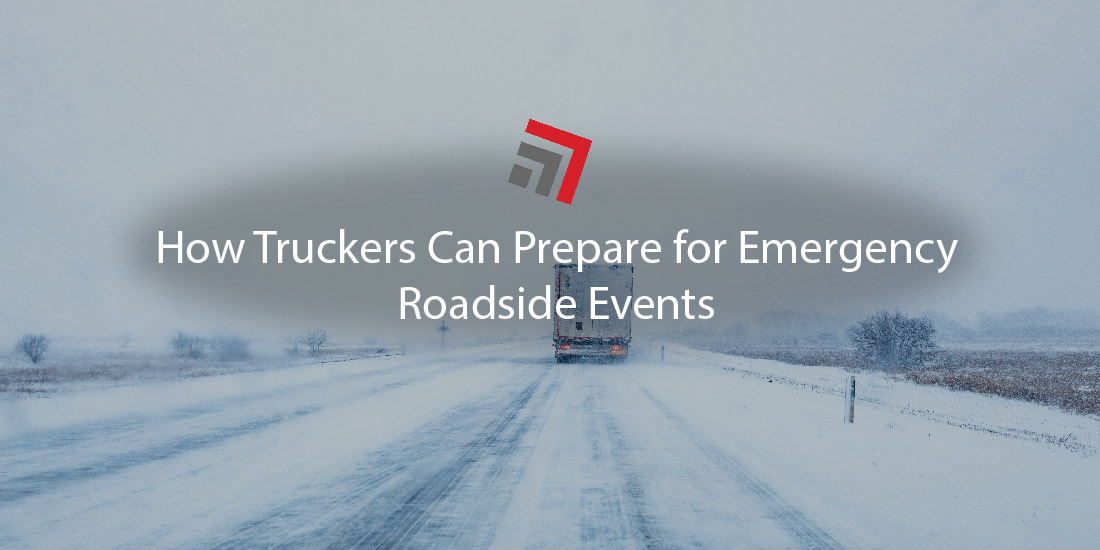We feel it’s only appropriate to rehash safety in trucking. Just last week, a large weather system dumped a wintry mix of snow and ice to the north and summoned tornadic storms to the south.
If that wasn’t cruel enough, the American Midwest and Rust Belt regions are now in the thralls of another winter monster. Inland points, such as Minneapolis, Chicago, and Detroit, are expected to receive another deposit of snowfall, the likes of which could accumulate to over a foot.
In addition to snow, this weather system is forecasted to boast strong winds and white out visibility. Altogether, the ingredients to form blizzard conditions. While the above cities are front and center in storm’s path, Kansas City, St. Louis, Omaha, and Indianapolis are also issuing watches ahead of the weather’s system trek through the Midwest and Rust Belt states.
How truckers should prepare for emergency events
That all said, these particular regions of the U.S. are well traveled by our nation’s professional truck drivers. Key travel lanes, like I-35, I-90, and I-94, will be recipients of these blizzard-like conditions.
More than ever, truckers are at risk for an emergency roadside event.
While things can go wrong at any time during the year, the winter months bring along a greater likelihood for external issues, notably poor weather and road conditions.
Courtesy of FleetOwner, the following are essential tools truckers need in an emergency event.
Tools required by law
Perhaps, essential should be changed to required for this first bit. Proper safety equipment is not only advised, but upheld by regulatory decree.
Standard in any commercial vehicle should be triangles (prop up safety signs), a fire extinguisher, and a high-visibility vest. Moreover, fleets should regularly inspect extinguishers to ensure the equipment works properly. While they typically can last for a decade, it’s not safe to bank on this when the need finally arises to have to use one.
Spare fuses, flares (including three liquid-burning ones), and red flags are also required onboard a CV.
Basic tool set
Aside from the required ones, truckers should also have a basic repertoire of other tools readily available. Weather aside, internal issues, like a loose flap or a light in need of a change, in their vehicles may occur and, while most are not critical, if left unfixed they can be subject to out-of-service violations (enforced by the CVSA).
A couple of crescent wrenches, open box wrenches, screwdrivers, and a vice grip are what fleet insiders recommend. Most issues have a simple fix to them that typically require no sort of mechanical bravado or some grandiose set of craftsman tools.
Basic Survival
Truckers can be on the road for a long time covering a lot of ground. In the case of an emergency where they can be stuck for any length of time, it’s wise to plan ahead and stow onboard basic necessities.
While we romanticize adventurer Bear Grylls and his capacity to drink his own urine, truckers are best to wait it out with supplies of fresh water, canned foods, and beef jerky.
First-aid kits and a phone charger are also crucial in case a trucker is ailed physically and needs support.
Winter Weather
Within the context of this blog, this last pointer is the most relevant. While not every route in the country is impacted by winter conditions, key lanes of travel in the Midwest and northern regions are vulnerable to snow, ice, and sheer wind gusts. And, as seen above, some weather systems can unite all three of these conditions into one big punch.
Truckers should carry tire chains before embarking on a route through a region prone to winter conditions. Some states, like California and Colorado, already require that chains must be equipped on heavy-duty vehicles in certain areas.
In the event of heavy snowfall, shovels, brooms, and kitty litter are all helpful allies in clearing off snow and affording these large vehicles traction in slick conditions.
Aside from chains, antifreeze is also strongly recommended. Bone chilling temperatures can disrupt the internal workings of vehicles. This product, composed mainly of alcohol, will thaw out a vehicle’s internal components and ensure everything runs smoothly.
Lastly, while blizzards do not happen every day in the winter (sighs of relief), colder temperatures can linger in most regions until late spring. A good jacket, gloves, and handwarmers go a long way in making trips less miserable and more comfortable.
In the case of overnight or long-haul trips, truckers can benefit from thermal blankets, extra clothes, and good bedding.
Final Thoughts
Another word of advice to our brave truckers would be to pay attention to special weather advisories and warnings. The National Weather Service is a trusted and updated resource truckers can reference if there’s any concern about travel conditions.
The end-all and be-all message has to be—the load can always wait. Truckers should never put their safety at an unnecessary risk to complete a job.
Contact one of our team members if you have any questions regarding this topic or any others in domestic logistics.
This is an everchanging industry. Stay current on rail and trucking developments with our weekly Road Map Newsletter.



Recent Comments